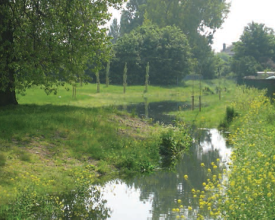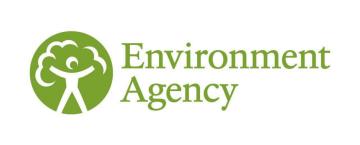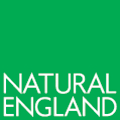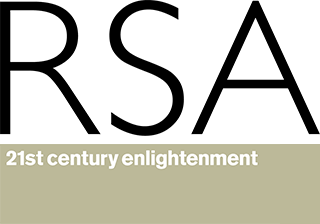Mayesbrook river restoration project
Solución completa
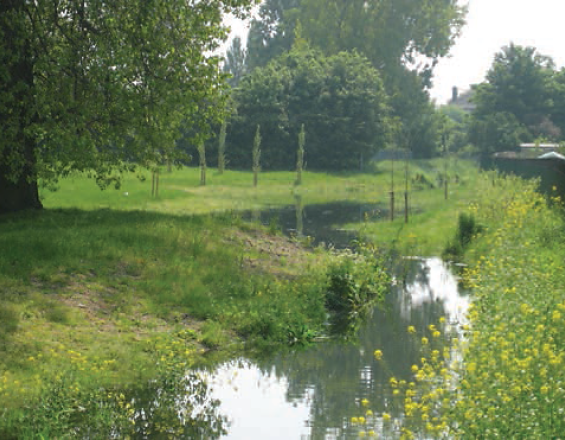
Mayesbrook Park river restoration, lower reach. May 2012
Source: LBBD, 2012
The restoration of Mayesbrook Park in east London was a project to restore the river that originally gave the park its name. A significant driver of the project was to update the park’s 50-year-old flood management infrastructure using a green infrastructure approach that would create natural flood storage while regenerating the park and improving amenity values, increasing urban greening, creating opportunities for access to nature, and benefiting biodiversity.
Last update: 02 Oct 2020
6704 Views
Contexto
Défis à relever
The high number of partners from public, private and voluntary organizations, though innovative in concept, meant a higher degree of uncertainty in terms of funding and technical resources that were dependent on successful cooperation to achieve the project objectives.
Ubicación
Mayesbrook Park, London, United Kingdom
North Europe
Procesar
Summary of the process
An elaborate ecosystem services assessment helped to quantify the range of environmental and socio-economic benefits which were to be generated through the project, and therewith build the case for in-vestment (building block 2). In parallel, public engagement activities served to identify the various inter-ests, expectations and goals of stakeholders and design the project in such as way as to maximize the delivery of desired benefits (building block 1). These activities also served to increase the public’s aware-ness and acceptance of the project.
Building Blocks
Maximizing social benefits and acceptance through engagement
Prior to the restoration, Mayesbrook Park was unloved and underused. For the project to be a success, it was thus important to reconnect the neighbouring communities with the park and its planned refurbishment. Extensive public consultation helped the partners address local concerns about the park and served to ensure significant social benefits, such as an increased number of visitors in the park, as well as a greater feeling of safety. As the park was home to criminal activities and antisocial behavior prior to reformation, the use of an on-site ranger has helped to reduce this threat and provide greater comfort to visitors and the surrounding communities. In addition, Natural England also worked with the schools to see how the park could be most relevant to their needs and based new natural play facilities and trail markers in the on designs by these children. The improvement in landscape, social and aesthetic value helped shape new recreation facilities and enabled better access for park users.
Enabling factors
A public consultation was carried out. The main concerns raised were over security within the park and provision of play facilities and good park maintenance. It was determined that local park visitors wanted the park as a whole to include a balance of sports, play and natural areas, plus toilets, seating and eating areas – and these concerns were integrated in the project design. Equally important has been to help local people understand the natural services provided by the river.
Lesson learned
Ongoing consultation has been important in establishing links with the wider community, and the integration of their concerns in the restoration plan has served to validate their involvement. By linking up the local council’s environmental health officers and Thames Water’s Misconnections Project, which is part of the national Connect Right Campaign, people are also more informed about making sure their home plumbing is not discharging into the Mayes Brook. Lastly, combining social and environmental regeneration goals increased the financial and human resources available from a wider range of sources.
Estimating benefits to make the case for investment
An elaborate ecosystem services assessment helped build the case for investment in an integrated urban river restoration, highlighting benefits relating to water, land, social and climate change issues. Assessed over 40 years, the lifetime benefits of the restoration activities were estimated at €31.2 million – a benefit-to-cost ratio of 7:1. This value-based approach to urban green infrastructure demonstrated that the restoration of the park was a cost-effective way of improving the wellbeing of the local community, particularly as compares to a purely ‘hard engineering’ solution which tends to maximise single services (flood risk etc), while generally having unintended consequences for a range of other interconnected services. The assessment and accompanying report were key in convincing funders to contribute to this project, illustrating how the combination of knowledge, data and resources can enable different sectors to successfully deliver large projects and provide a wide range of benefits far beyond what a single organisation could afford to fund alone.
Enabling factors
An Ecosystem Services Assessment was conducted. The involvement of the Environment Agency as a partner helped in the process of securing the numerous approvals needed (flood risk, contaminated land, soil disposal etc.) to successfully conduct the assessment and gather the needed data. This cooperation lead to a quantified estimate of benefits from all of the proposed restoration work prior to implementation, as well as an analysis post-implementation.
Lesson learned
It remains difficult to monitor and quantify the benefits of ecosystem services, especially supporting services such as nutrient cycling and habitat for wildlife. Nevertheless, it is crucial in evaluating ecosystem services to consider and – to the extent possible - quantify all service categories (provisioning, regulatory, cultural and supporting). In the case of Mayesbrook, the assessment found that more than 88 percent of the total ecosystem service benefits assessed for the park were benefits to health (such as improving air quality), risk (such as reducing potential flood damage) and cultural value (such as providing opportunities for education). Thus, by creating a thriving, multifunctional landscape and combining social and environmental regeneration goals, the Mayesbrook Climate Change Park demonstrates how an urban river park restoration can successfully deliver public, private and voluntary sector objectives simultaneously – a key factor in making the investment case.
Impacts
Reconnecting the river with its floodplain has increased flood storage by one hectare, and thus reduced the degree of flood risk to local homes and businesses. The new floodplain, wetland and river spaces have provided a multifunctional landscape that is more resilient for people and biodiversity. The creation of 500m of new sinuous water channels help slow down high flows and improve habitat diversity, while 450m of re-graded banks help to increase the capacity of the river and improve the riverside habitat. In addition to the ecological benefits, the restoration of the River Mayesbrook has provided many other benefits, such as health benefits, improvement in the quality of life and well-being of the local inhabitants, improved safety through greater park usage, socio-economic benefits to local sports clubs and the provision of an educational resource for the local schools.
Beneficiaries
Restoration has improved access to green spaces and recreation opportunities for the local community. Improved floodwater management also reduces the local flood risk. By means of habitat restoration, the local biodiversity benefits as well.
Sustainable Development Goals
SDG 3 – Good health and well-being
SDG 6 – Clean water and sanitation
SDG 11 – Sustainable cities and communities
SDG 13 – Climate action
